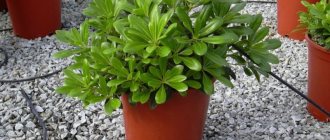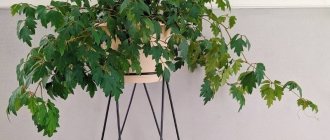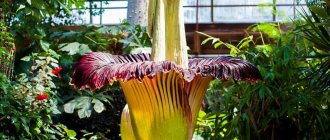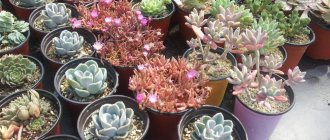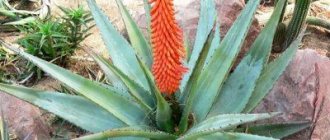Yoshta
0
Source:
Crossing such plant species as currants (johannisbeere) and gooseberries (stachelbeere) produced the yoshtu berry with fruits close to black in color, the size of a cherry, with a sweet and sour, slightly astringent taste, pleasantly reminiscent of currants. Michurin also dreamed of creating currants the size of gooseberries, but not prickly. He managed to develop the “Black Moor” gooseberry, which is dark purple in color. By 1939, in Berlin, Paul Lorenz was also breeding similar hybrids. Due to the war, these works were stopped. It was only in 1970 that Rudolf Bauer managed to get the ideal plant. Now there are two varieties of yoshta: “Black” (brown-burgundy color) and “Red” (faded red color). During the season, 7-10 kg of berries are obtained from the yoshta bush. They are used in homemade preparations, desserts, and for flavoring soda. Yoshta is good for gastrointestinal diseases, for removing heavy metals and radioactive substances from the body, and improving blood circulation.
×
0
Source:
Pollination of parent plants
The main way to develop new varieties is pollination. To do this, select two parent varieties according to the parameters outlined above.
Then the long process of elimination begins:
- timing of pollination - it is extremely important to carry out the pollination process on time: the mother flower (which is pollinated) should be no older than 3-4 days, the main indicator is the stickiness of the tip of the pistil;
- the father's flower, on the contrary, must be well-ripened, no younger than 3-4 days, depending on the duration of flowering of the variety.
Attention! Pollen can be used from dried flowers; the storage time of such material is about six months, this simplifies the selection process by eliminating the need for simultaneous flowering of the parent bushes.
- When choosing a mother bush, it is important to carefully examine it or even prepare it in advance . The rosette must be healthy and strong enough for the seed pod to ripen on it. The paternal rosette can be anything, but a healthy rosette has a higher chance of successful pollination;
- those flower growers who do not risk taking dried pollen must first align the flowering cycles of the parent rosettes : to do this, the flower stalks are cut off on a bush that wants to bloom much earlier than the second;
- Another option is to remove several flower stalks from both bushes and move them to cool conditions, and then expose them to plenty of light and warmth, after which they usually bloom together.
- cut off the anther from the father's flower;
Cut anthers.
- A successfully pollinated flower shows this after a few days. A compaction appears under the pistil , which is the future seed pod;
- seeds ripen from 1.5 to 8 months , it all depends on the conditions and the mother plant. You need to wait until the box dries. It must be remembered that seeds that have matured longer have better germination, for example, 1.5-month-old seeds often do not germinate at all;
- After receiving the seeds, they are sown , preferably as soon as possible. Sowing is carried out in moist soil, without sprinkling with soil on top, covered with film and periodically sprayed, the temperature for germination is 22°C;
- The children are raised in a greenhouse for a long time , periodically ventilated. Picking is carried out 2-3 times, depending on the density of the seedlings;
- after transplanting into separate flowerpots, the care of the young plant coincides with the care that is provided to the planted baby, obtained by the vegetative method;
- During the growth process, “unnecessary seedlings” are culled . Those rosettes that, according to the parameters set by the breeder himself, do not pass and are not interesting to him, are simply thrown away or given away;
- The last step to obtain a new variety is to check the result or consolidate it . In order to be called a full-fledged variety, a flower must transmit varietal characteristics when propagated by leaves or stepsons from three generations or more. Until then, I consider the plant to be a seedling.
To obtain specific parameters multiple pollination is often used , thus adding more and more new parameters of the rosette and flowers. To do this, a suitable seedling after the first pollination is dusted during the second flowering or pollen is taken from it and mixed with a suitable variety.
The process is repeated until the desired result or varieties are obtained that interest the breeder more than his original plan. This procedure is very labor-intensive and such work may take years, but the reward will be the varieties bred at the intermediate stages and, most importantly, a new, unique, final variety.
Pollination of Saintpaulias is a very complex process , especially for indoor bred species. Their anthers grow together, which virtually eliminates both cross-dusting and self-dusting.
In rare cases, the coincidence of damage to the anther in some way and the presence of an insect or other method of transferring pollen leads to dust.
Self-pollinating violets at home is almost impossible.
Yellow watermelon
0
Source:
Yellow watermelons, perhaps, have ceased to be completely a curiosity - they can often be seen in stores. On the outside, they are the usual striped watermelon, but at the same time bright yellow on the inside. Another feature is the very small number of seeds. This watermelon is the result of crossing a wild one (yellow inside, but completely tasteless) with a cultivated watermelon. The result was juicy and tender, but less sweet than red. They are grown in Spain (round varieties) and Thailand (oval). But in Russia, breeder Sokolov from Astrakhan was able to grow a rather sweet type of yellow watermelon. This variety has a very sweet taste with some exotic notes, similar to the taste of mango or lemon, or pumpkin.
0
Source:
Where does violet selection begin?
When planning to develop a new variety and taking this issue seriously, the breeder defines a goal. To do this, he determines a set of factors that he wants to see in the new variety:
- size and shape of the outlet;
- leaf shape;
- flower size;
- flower shape;
- leaf color;
- the color scheme of the bud at different stages of growth.
Knowing the requirements for the future bush, the selection of maternal and paternal individuals begins. When propagating from seeds, it does not really matter which bush will perform which role.
Sometimes, to obtain all varietal characteristics, it is necessary to carry out more than one crossing, but several stages.
Parent bushes must have parameters that are desirable for the new variety . At home, they usually use the seed selection method; for some varieties, the leaf method is available.
It is necessary to take into account the dominance and recessivity of some of them. The first concept implies a strong gene that suppresses the second option.
For example, a standard size when crossing a mini and a standard is more likely to be obtained than a mini or semi-mini.
This parameter does not mean that all 100% of children from breeding will receive a dominant gene, but their number will significantly exceed children with a recessive parameter.
The table shows the main variants of the variety's characteristics, divided into strong and weaker ones.
| Dominant | Recessive |
| Strong peduncles | Flower stalk |
| Double flowers | Simple form |
| Simple flowers | Star shape |
| Solid color | Two-tone tone |
| White, blue, purple color | Pink, coral, yellow |
| Fantasy color | Regular color |
| Border around the edge (especially white, pencil) | No border |
| Pointed petal | Regular form |
| Fringe around the edge | Smooth edge |
| Girl leaves | Fight leaves |
| wavy leaf | Regular edge |
| Regular sheets | spoon shape |
| Narrow leaves and long petioles | Wide with short stems |
| Standard size | Mini and semi-mini |
The examples given are the result of observations by experienced breeders, but the result always depends on the specifically selected parent varieties.
In addition, among seedlings both parameters of mother plants are usually found to a greater or lesser extent, for example, there will be many more standards, but there will still be mini ones.
Purple potatoes
0
Source:
Potatoes with pink, yellow or purple skins no longer surprise anyone. But scientists from Colorado State University managed to get potatoes with a purple color inside. The variety is based on Andean highland potatoes, and the color is due to the high content of anthocyanins. These substances are the strongest antioxidants, the properties of which are preserved even after cooking. These purple potatoes with a familiar taste look great mashed, indescribably rich in color, baked, and of course fries.
0
Source:
Liger and tiger lion
The first is a hybrid of a tigress and a lion, and the second is the offspring of a lioness and a tiger. These animal hybrids are born exclusively in artificial conditions, the reason for this is banal - different habitats (Africa and Eurasia) do not allow them to meet, this is only possible in menageries.
Externally, ligers are similar to the cave lion, which became extinct during the Pleistocene period. To date, this hybrid is considered the largest among cats. This phenomenon is explained by growth genes: in tigers they are not as active as in lions. For the same reason, the tigrolev is smaller than the tiger.
In the Jungle Island amusement park (Miami, USA) there is a male liger named Hercules weighing 418 kg. For comparison: the average weight of an Amur tiger varies from 260 to 340 kg, and an African lion - from 170 to 240 kg. Thus, Hercules absorbs up to 45 kg of food in one go, and develops a speed of 80 km/h in 10 seconds.
The remarkable thing about ligers is that these cats love to splash in the water. Another feature: ligers are one of the few hybrids that are able to reproduce. So, in the Novosibirsk Zoo on August 16, 2012, the lion Samson and the ligress Zita became parents, giving birth to the liligress Kiara.
Today there are just over 20 ligers in the world.
Romanesco cabbage
0
Source:
The ethereal appearance of this close relative of broccoli and cauliflower perfectly illustrates the concept of “fractal.” Its soft green inflorescences are cone-shaped and arranged in a spiral on the head of cabbage. This cabbage comes from Italy, it has been widely sold for about 10 years, and its popularization was facilitated by Dutch breeders, who slightly improved the vegetable, known to Italian housewives since the 16th century. Romanesco has little fiber and a lot of useful substances, making it easily digestible. Interestingly, when preparing this cabbage, there is no characteristic cabbage smell, which not everyone likes, especially children. In addition, the exotic appearance of the space vegetable makes you want to try it. Romanesco is prepared like regular broccoli - boiled, stewed, added to pasta and salads.
0
Source:
Conservation and use of crop genetic diversity
Intensive programs of crossing and selection lead to a narrowing of the genetic diversity of cultivated plants for all their traits. For obvious reasons, it is mainly aimed at increasing productivity, and among the very homogeneous offspring of specimens selected strictly for this trait, disease resistance is sometimes lost. Within a culture, plants become more and more uniform, since certain of their characteristics are more pronounced than others; Therefore, crops in general are more vulnerable to pathogens and pests. For example, in 1970, helminthosporium blight, a fungal disease of corn caused by Helminthosporium maydis (pictured above), destroyed approximately 15% of the U.S. corn crop, causing losses of approximately $1 billion. These losses appear to be due to the emergence of a new race of fungus, which is very dangerous to some of the main lines of corn that were widely used in the production of hybrid seeds. Many commercially valuable lines of this plant had identical cytoplasm, since the same pistillate plants are repeatedly used in the production of hybrid corn.
To prevent such damage, it is necessary to grow in isolation and preserve different lines of important crops, which, even if the sum of their traits is not of economic interest, may contain genes useful in ongoing pest and disease control.
Pluot and Aprium
0
Source:
By crossing plant species such as plums and apricots, two hybrids were obtained: Pluot, which looks more like a plum, and Aprium, which looks more like an apricot. Both hybrids are named after the first syllables of the English names of the parent species. Externally, pluot fruits are colored pink, green, burgundy or purple, while the inside varies from white to deep plum. These hybrids were bred at Dave Wilson Nursery in 1989. Now in the world there are already two varieties of aprium, eleven varieties of pluot, one nectaplama (a hybrid of nectarine and plum), and one pichplama (a hybrid of peach and plum). Plouts are used for making juice, desserts, homemade preparations and wine. This fruit tastes much sweeter than both plum and apricot.
0
Source:
Spatial and temporal isolation during crossing
When crossing cross-pollinating crops, spatial isolation can be used: the plants are grown in different areas remote from the plants of the given variety. Such crops include carrots, cabbage, beets, etc.
In dioecious plants such as spinach, when growing in one area, one of the varieties should have the male plants removed.
Crossing cross-pollinating crops in isolated areas greatly minimizes labor costs: pollination occurs naturally - by wind or insects. In addition, in one isolated area it is possible to place several plants of the same variety, thus increasing the number of hybrid seeds obtained. A significant disadvantage of this method is the impossibility of completely eliminating the ingress of foreign pollen. In addition, with natural cross-pollination, approximately half of the plants are fertilized with pollen from their own variety.
In regions with a warm climate, where the growing season is quite long, for plants with quickly fading flowers, isolation at time intervals can be used: different combinations of crossings are carried out in the same area. Different flowering times eliminate unplanned cross-pollination.
In breeding practice, in the absence of sufficient space for organizing individual areas, insulating structures are used:
- The design is made in the form of a frame, which is covered with light transparent fabric.
- To isolate individual shoots or inflorescences, small “houses” are made of parchment paper or gauze, which are covered with a wire frame.
For insect-pollinated plants, when constructing insulators, it is better to use materials such as cambric or gauze; for wind-pollinated crops, parchment paper.
Broccolini
0
Source:
In the cabbage family, as a result of crossing regular broccoli and Chinese broccoli (gailana), a new cabbage was obtained - similar to asparagus on the top with a broccoli head. Broccolini is a little sweet, does not have a sharp cabbage spirit, with a peppery note, delicate in taste, reminiscent of both asparagus and broccoli. It contains many useful substances and is low in calories. In the USA, Brazil, Asian countries, Spain, broccolini is usually used as a side dish. It is served fresh, drizzled with butter or lightly fried in oil.
0
Source:
Propagation of indoor plants by division
Types of cacti: plant options without spines or with leaves
Plants: fern, violet, sansevieria, arrowroot, asparagus, calathea.
Such house flowers form small daughter bushes (rosettes), and they can be propagated by dividing the bush. This procedure should be carried out in spring or early summer. The mother plant is taken out of the pot, the soil is shaken off and carefully, breaking or cutting with a sharp knife, the daughter part of the flower is separated at the point where it joins the mother plant. Each young plant should already have a healthy growing point and a fully developed root system. They should be planted in a moist soil mixture. Until the plant takes root and sprouts new shoots, the soil in the pot should always be kept moist, and direct sunlight should be avoided.
Nashi
0
Source:
Another result of plant crossings is Nashi. It was obtained from apples and pears in Asia several centuries ago. There it is called Asian, water, sand or Japanese pear. The fruit looks like a round apple, but tastes like a juicy, crisp pear. The color of Nashi ranges from pale green to orange. Unlike regular pears, nashi is harder, so it is better stored and transported. Nashi is quite juicy, so it is best used in salads or solo. The fruit is also good as a snack for wine along with cheese and grapes. Currently, about 10 popular commercial varieties are grown in Australia, the USA, New Zealand, France, Chile and Cyprus.
0
Source:
Distant hybridization
Restoring the fertility of a cabbage-raspberry hybrid:
1 - cabbage; 2 - radish; 3, 4 - cabbage-rare hybrid.
Distant hybridization
- This is the crossing of plants belonging to different species. Distant hybrids are usually sterile because meiosis is disrupted (two haploid sets of chromosomes from different species cannot conjugate) and, therefore, gametes are not formed.
A technique for overcoming infertility in distant hybrids was developed in 1924 by the Soviet scientist G.D. Karpechenko. He proceeded as follows. First I crossed the radish (2 n
= 18) and cabbage (2
n
= 18). The diploid set of the hybrid was equal to 18 chromosomes, of which 9 chromosomes were “rare” and 9 were “cabbage”. The resulting cabbage-radish hybrid was sterile, since during meiosis the “rare” and “cabbage” chromosomes were not conjugated.
Next, with the help of colchicine G.D. Karpechenko doubled the chromosome set of the hybrid, the polyploid began to have 36 chromosomes; during meiosis, “rare” (9 + 9) chromosomes were conjugated with “rare” chromosomes, “cabbage” (9 + 9) with “cabbage”. Fertility was restored. In this way, wheat-rye hybrids (triticale), wheat-wheatgrass hybrids, etc. were obtained. Species in which different genomes were combined in one organism, and then their multiple increase, are called allopolyploids
.
Yuzu
0
Source:
Yuzu (Japanese lemon) is a hybrid of mandarin and ornamental citrus (ichang papeda). The fruit, the size of a tangerine, is green or yellow in color with lumpy skin and has a sour taste and bright aroma. The Japanese have been using it since the 7th century, when Buddhist monks brought this fruit from the mainland to the islands. Yuzu is popular in Chinese and Korean cooking. It has a completely unusual aroma - citrus, with floral shades and notes of pine. Most often used for flavoring, the zest is used as a seasoning. This seasoning is added to meat and fish dishes, miso soup, and noodles. Jams, alcoholic and non-alcoholic drinks, desserts, and syrups are also prepared with zest. The juice is similar to lemon juice (sour and aromatic, but softer) and is the basis of ponzu sauce, and is also used as vinegar. It also has cult significance in Japan. On December 22, the winter solstice, it is customary to take baths with these fruits, which symbolize the sun. Its aroma drives away evil forces and protects against colds. Animals are dipped into the same bath, and then the plants are watered with water.
0
Source:
Crossing plant species
Man, in his quest to improve nature, moves further and further. Thanks to modern advances in genetics, farmers are getting more and more unusual and interesting hybrids that can satisfy the wildest desires of consumers. In addition, globalization leads to the spread of plant species that are not typical for a given climate zone. In our country, pineapples and bananas have long since become exotic; hybrid nectarines and miniols, etc., have become commonplace.
Yellow watermelon (38 kcal, vitamins A, C)
It's the usual striped watermelon on the outside, but bright yellow on the inside. Another feature is the very small number of seeds. This watermelon is the result of crossing a wild one (yellow inside, but completely tasteless) with a cultivated watermelon. The result was juicy and tender, but less sweet than red. They are grown in Spain (round varieties) and Thailand (oval). There is a variety “Lunny” bred by breeder Sokolov from Astrakhan. This variety has a very sweet taste with some exotic notes, similar to the taste of mango or lemon, or pumpkin. There is also a Ukrainian hybrid based on watermelon (“kavuna”) and pumpkin (“garbuza”) - “Kavbuz”. It is more like a pumpkin with a watermelon flavor and is ideal for making porridge.
Purple Potatoes (72 kcal, vitamin C, B vitamins, potassium, iron, magnesium and zinc)
Potatoes with pink, yellow or purple skins no longer surprise anyone. But scientists from Colorado State University managed to get potatoes with purple colors inside. The variety is based on Andean highland potatoes, and the color is due to the high content of anthocyanins. These substances are the strongest antioxidants, the properties of which are preserved even after cooking. They called the variety “Purple Majesty”; it is already actively sold in England and is being started in Scotland, whose climate is most suitable for the variety. The variety was popularized by the English cook Jamie Oliver. These purple potatoes with a familiar taste look great mashed, indescribably rich in color, baked, and of course fries.
Romanesco cabbage (25 kcal, carotene, vitamin C, mineral salts, zinc)
The ethereal appearance of this close relative of broccoli and cauliflower perfectly illustrates the concept of “fractal.” Its soft green inflorescences are cone-shaped and arranged in a spiral on the head of cabbage. This cabbage comes from Italy, it has been widely sold for about 10 years, and its popularization was facilitated by Dutch breeders, who slightly improved the vegetable, known to Italian housewives since the 16th century.
Romanesco has little fiber and a lot of useful substances, making it easily digestible. Interestingly, when preparing this cabbage, there is no characteristic cabbage smell, which children do not like so much. In addition, the exotic appearance of the space vegetable makes you want to try it. Romanesco is prepared like regular broccoli - boiled, stewed, added to pasta and salads.
Pluot (57 kcal, fiber, vitamin C)
By crossing plant species such as plums (plum) and apricots (apricot), two hybrids were obtained: pluot, which looks more like a plum, and aprium, which looks more like an apricot. Both hybrids are named after the first syllables of the English names of the parent species. Externally, pluot fruits are colored pink, green, burgundy or purple, while the inside varies from white to deep plum. These hybrids were bred at Dave Wilson Nursery in 1989. Now in the world there are already two varieties of aprium, eleven varieties of pluot, one nectaplama (a hybrid of nectarine and plum), and one pichplama (a hybrid of peach and plum). Plouts are used for making juice, desserts, homemade preparations and wine. This fruit tastes much sweeter than both plum and apricot.
Watermelon radish (20 kcal, folic acid, vitamin C)
Watermelon radishes live up to their name - they are bright crimson inside and covered with white-green skin on the outside, just like a watermelon. In shape and size too (diameter 7-8 cm) it resembles a medium-sized radish or turnip. It tastes quite ordinary - bitter near the skin and sweetish in the middle. True, it is harder, not as juicy and crispy as regular one. It looks wonderful in a salad, simply sliced with sesame seeds or salt. It is also recommended to puree it, bake it, and add it to vegetables for frying.
Yoshta (40 kcal, anthocyanins with antioxidant properties, vitamins C, P)
Crossing such plant species as currants (johannisbeere) and gooseberries (stachelbeere) produced the yoshtu berry with fruits close to black in color, the size of a cherry, with a sweet and sour, slightly astringent taste, pleasantly reminiscent of currants. Michurin also dreamed of creating currants the size of gooseberries, but not prickly. He managed to develop the “Black Moor” gooseberry, which is dark purple in color. By 1939, in Berlin, Paul Lorenz was also breeding similar hybrids. Due to the war, these works were stopped. It was only in 1970 that Rudolf Bauer managed to get the ideal plant. Now there are two varieties of yoshta: “Black” (brown-burgundy color) and “Red” (faded red color). During the season, 7-10 kg of berries are obtained from the yoshta bush. They are used in homemade preparations, desserts, and for flavoring soda. Yoshta is good for gastrointestinal diseases, for removing heavy metals and radioactive substances from the body, and improving blood circulation.
Broccolini (43 kcal, calcium, vitamins A, C, iron, fiber, folic acid)
In the cabbage family, as a result of crossing ordinary broccoli and Chinese broccoli (gailan), a new cabbage was obtained that looks like asparagus on the top with a broccoli head. Broccolini is a little sweet, does not have a sharp cabbage spirit, with a peppery note, delicate in taste, reminiscent of asparagus and broccoli at the same time. It contains many useful substances and is low in calories. In the USA, Brazil, Asian countries, Spain, broccolini is usually used as a side dish. It is served fresh, drizzled with butter or lightly fried in oil.
Nashi (46 kcal, antioxidants, phosphorus, calcium, fiber)
Another result of plant crossings is Nashi. It was obtained from apples and pears in Asia several centuries ago. There it is called Asian, water, sand or Japanese pear. The fruit looks like a round apple, but tastes like a juicy, crisp pear. The color of Nashi ranges from pale green to orange. Unlike regular pears, nashi are harder, so they are better stored and transported. Nashi is quite juicy, so it is best used in salads or solo. Also good as an appetizer with wine along with cheese and grapes. Currently, about 10 popular commercial varieties are grown in Australia, the USA, New Zealand, France, Chile and Cyprus.
Yuzu (30 kcal, vitamin C)
Yuzu (Japanese lemon) is a hybrid of mandarin and ornamental citrus (ichang papeda). The fruit, the size of a tangerine, is green or yellow in color with lumpy skin and has a sour taste and bright aroma. The Japanese have been using it since the 7th century, when Buddhist monks brought this fruit from the mainland to the islands. Yuzu is popular in Chinese and Korean cooking. It has a completely unusual aroma - citrus, with floral shades and notes of pine. Most often used for flavoring, the zest is used as a seasoning. This seasoning is added to meat and fish dishes, miso soup, and noodles. Jams, alcoholic and non-alcoholic drinks, desserts, and syrups are also prepared with zest. The juice is similar to lemon juice (sour and aromatic, but softer) and is the basis of ponzu sauce, and is also used as vinegar. It also has cult significance in Japan. On December 22, the winter solstice, it is customary to take baths with these fruits, which symbolize the sun. Its aroma drives away evil forces and protects against colds. Animals are dipped into the same bath, and then the plants are watered with water.
Yellow beets (50 kcal, folic acid, potassium, vitamin A, fiber)
These beets differ from ordinary ones only in color and in the fact that they do not dirty your hands when cooking. It tastes just as sweet, aromatic, and is good baked and even in chips. Yellow beet leaves can be used fresh in salads.
But man is just learning to transform plant species, and nature has been creating such a miracle for a long time!
Kama (camel)
This is a hybrid of a male Bactrian and a female llama.
The first kama was born in 1998 at the Dubai Animal Reproduction Center. The individual was created artificially; the main purpose of such crossing was to obtain an animal with the endurance of a camel and the quality of the wool of a llama. The experiment was a success. The Kama turned out to weigh up to 60 kg, with wool at least 6 cm long, and with the ability to transport loads up to 30 kg. The disadvantage of camel is the inability to reproduce. Of course, in nature, such an option would be impossible, since llamas live in South America, and Bactrians live in Asia and Africa, and the former are significantly smaller in size than the latter. Despite these data, it turned out that camels and llamas have the same number of chromosomes. To date, six individuals have been obtained in the UAE.
Bester
Bester is a hybrid of two representatives of the sturgeon family - a female beluga and a male sterlet. Bester owes its appearance to the Russian biologist Professor N.I. Nikolyukin. Since 1948, he has come to grips with the problem of sturgeon hybridization. In 1952, Nikolai Ivanovich’s wife, who together with her husband worked on creating fish hybrids, tried to artificially produce offspring of sterlet and beluga. The Nekolyukins did not imagine that this unplanned experiment would mark the beginning of a new direction in fish farming.
During the experiments, the professor crossed different species of sturgeon, but the turn did not reach the beluga and sterlet. Perhaps he considered such an experiment initially a failure, since these sturgeons are different in size and weight (beluga - up to a ton, and sterlet - no more than 15 kg), live and spawn in different places, and their hybrids cannot produce offspring. But everything happened exactly the opposite.
Bester took from the beluga rapid growth, and from the sterlet - rapid sexual maturation, which is an important factor for industrial fish. The hybrid also produced incredibly tender meat and delicious caviar.
Now in Russia, besters are bred on an industrial scale.

